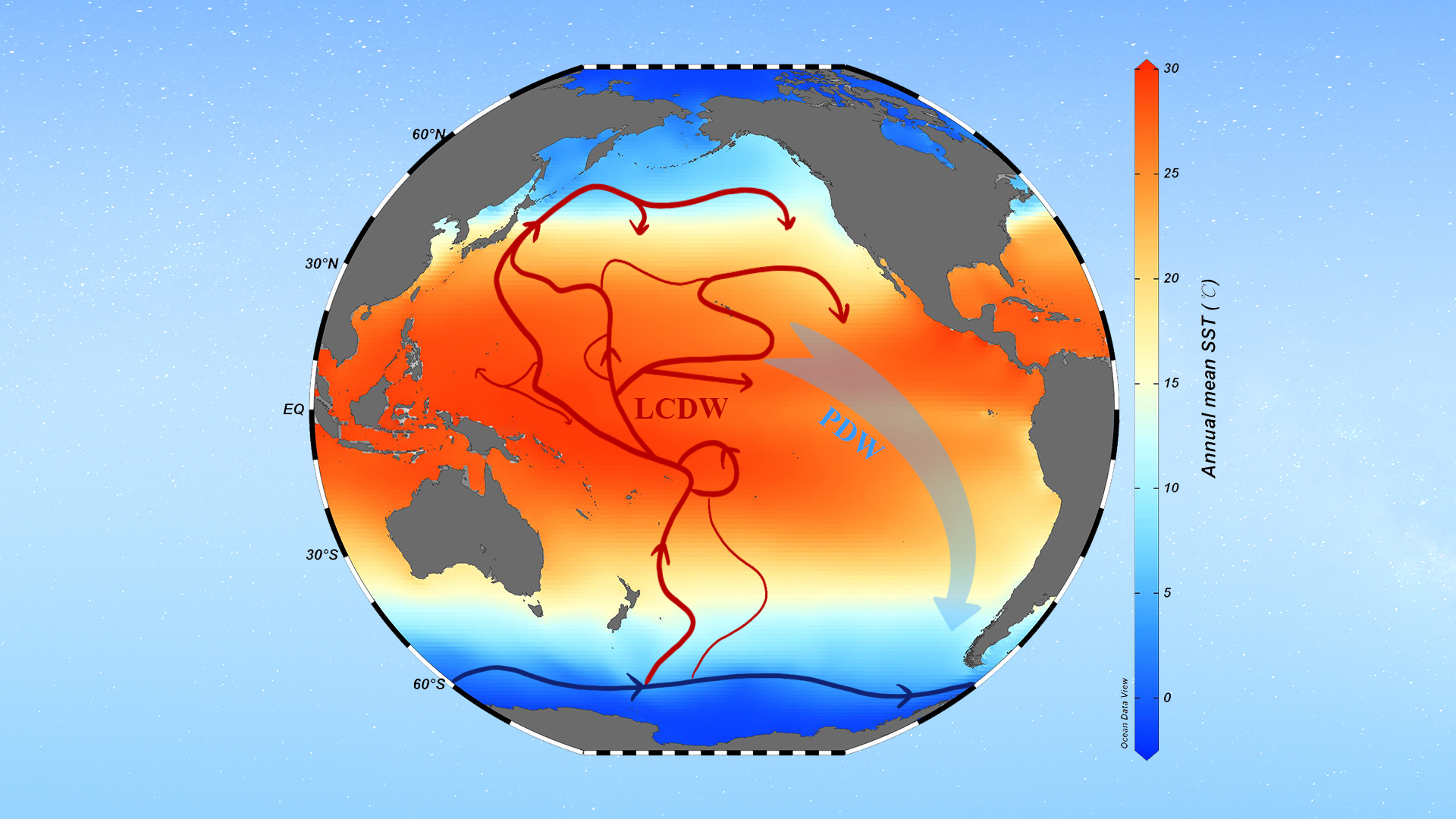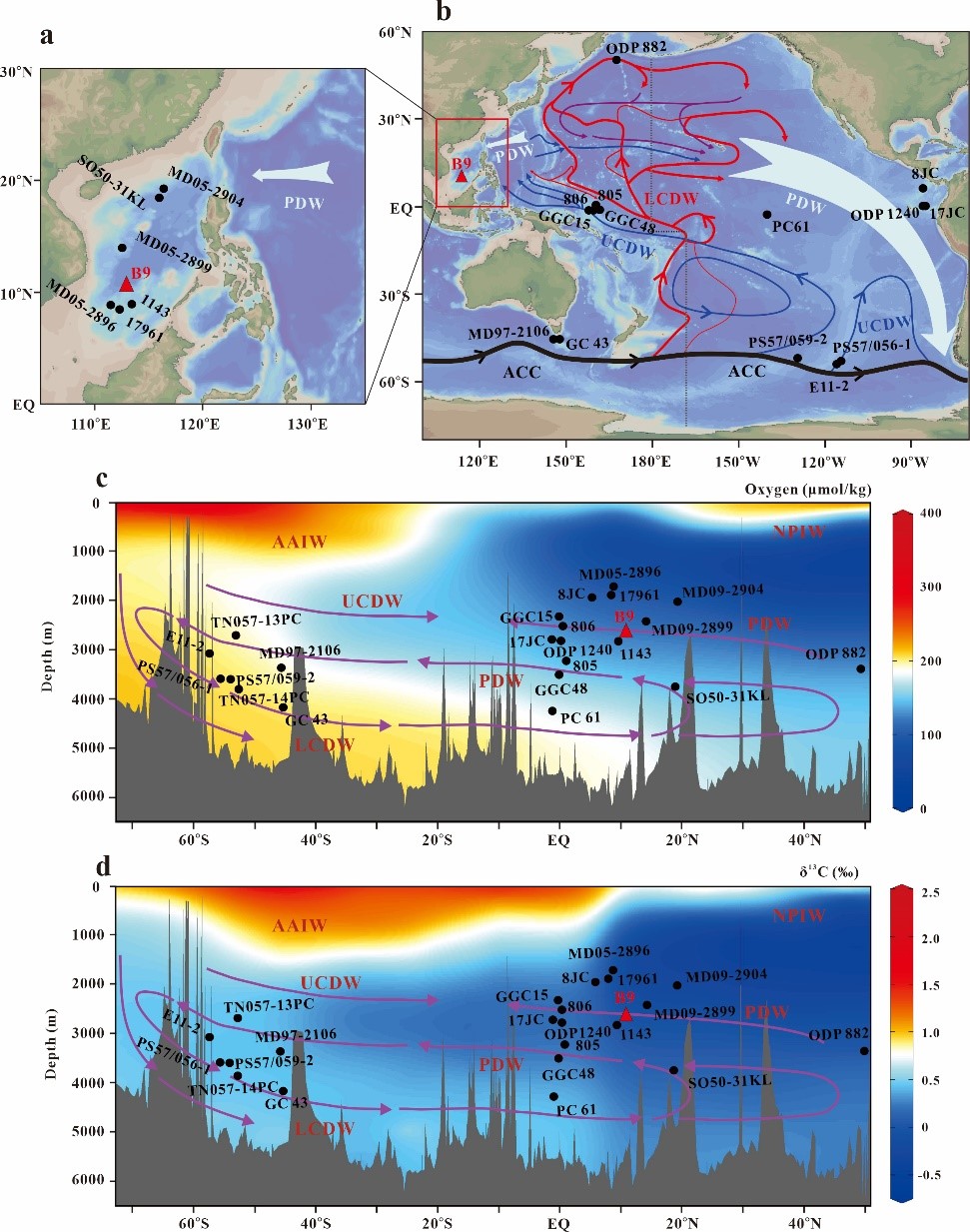Ocean circulation is crucial for redistributing temperature, carbon, and nutrients, significantly impacting the Earth’s climate system. The Southern Ocean upwells carbon dioxide (CO2)- and nutrient-enriched deep water into the surface ocean, regulating atmospheric CO2 during the glacial-interglacial cycle.
Recent evidence indicates that the Southern Ocean process cannot fully explain the atmospheric CO2 record in ice cores, necessitating consideration of bipolar sea regions. However, the roles of the Pacific Ocean in the global carbon cycle remain unclear due to calcareous dissolution, which provides valuable information about past ocean changes.

Chair Professor Qingsong Liu’s research team from the Center for Marine Magnetism in the Department of Ocean Science and Engineering at the Southern University of Science and Technology (SUSTech) has recently made significant strides in understanding deep-sea circulation evolution in the Pacific Ocean since the last glacial cycle and its effects on the global carbon cycle.
Their work, titled “Response of atmospheric CO2 changes to the Abyssal Pacific overturning during the last glacial cycle”, has been published in the journal Global and Planetary Change.
The South China Sea, the largest marginal sea in the Northwest Pacific, connects to the Pacific Ocean through the Luzon Strait (~2400m), making it an ideal region for studying deep Pacific circulation evolution (Figure 1). The researchers used redox-sensitive elements and benthic δ13C record of core B9 to analyze the water mass properties and ventilation conditions of South China Sea deep water (SCSDW) since the last glacial cycle.

Figure 1. Cores location and modern Pacific circulation
This study shows that stacked δ13C variations from different water masses in the North and South Pacific, along with deep-sea oxygenation history, indicate weakened deep-sea ventilation and overturning circulation during the ice age, resulting in the expansion of deep carbon storage (Figure 2).
The active overturning circulation during interglacial periods may have facilitated additional carbon release pathways in the North Pacific, boosting surface productivity in the subarctic Pacific. Additionally, during the decoupling period of Southern Ocean upwelling and atmospheric CO2, the North Pacific process likely played a crucial role in atmospheric CO2 changes.
This work highlights the synergistic effect of Pacific-Southern Ocean processes in the global carbon cycle, providing new insights into global carbon cycle changes.

Figure 2. Pacific abyssal overturning evolution and comparison between North and South Pacific. (a) The stacked δ13C of SCSDW, PDW, and LCDW, respectively; (b) Abyssal overturning suggested by ∆δ13CSCSDW-LCDW (black green line) and ∆δ13CPDW-LCDW (gray dotted line); (c) Ventilation based on authigenic V concentrations from core B9; (d) Deep Pacific [CO2-3] derived from B/Ca; (e) Ba/Al data from ODP 882; (f). Diatom-bound δ15N that represents the Southern Ocean upwelling (green line: the estimated mean average); (g) Dotted line is the predicted δ15N from Antarctic temperature and Earth obliquity; (h) Composite atmospheric CO2 concentration.
Ph.D. student Yanan Zhang from the Center for Marine Magnetism is the first author of the paper. Chair Professor Qingsong Liu and Researcher Gang Li from the South China Sea Institute of Oceanology of the Chinese Academy of Sciences are the co-corresponding authors.
Paper link: https://doi.org/10.1016/j.gloplacha.2024.104636
To read all stories about SUSTech science, subscribe to the monthly SUSTech Newsletter.
Proofread ByAdrian Cremin, Yingying XIA
Photo ByCenter for Marine Magnetism